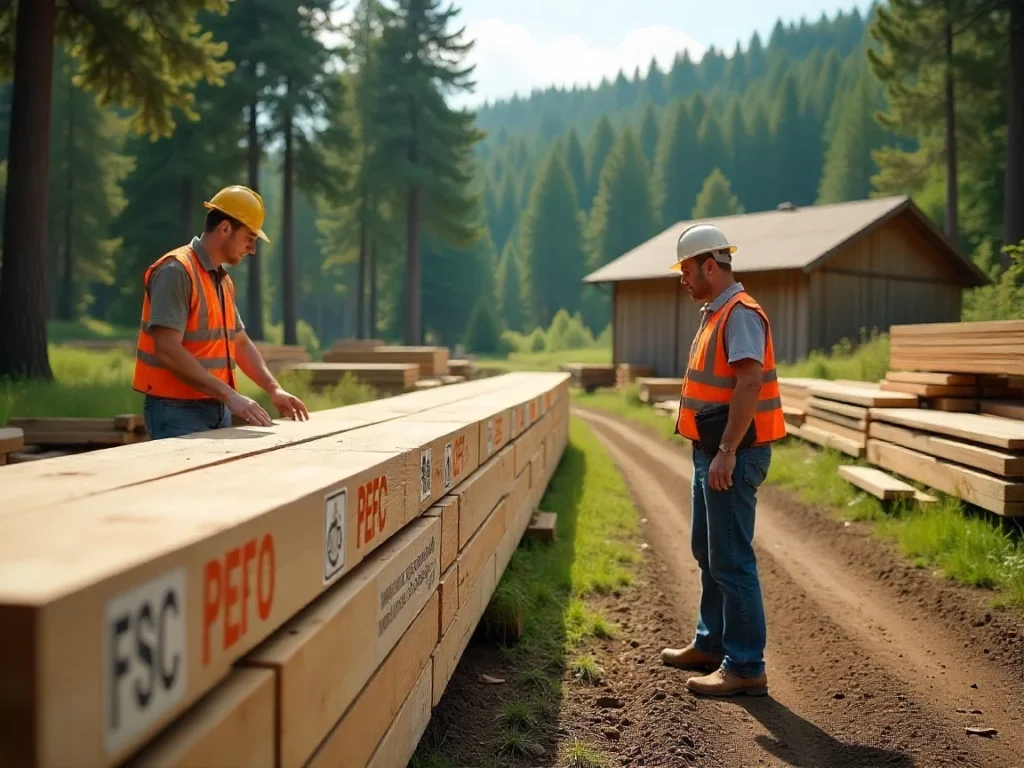As human civilization progresses with sprawling urban landscapes and infrastructural growth, the demand for lumber continues to rise. This increased need for wood places significant pressure on the world’s forests, turning responsible lumber sourcing into a crucial aspect of modern sustainable practices. Recognizing the intricate connection between environmental health and the timber industry is vital to preserving our planet for future generations. For example, partnering with organizations like hhforestry.co.uk can help businesses assure the credibility and sustainability of their lumber sources. Below, we delve into the complex world of sustainable lumber, unraveling why it matters and how it can be achieved for a greener future.
Key Certifications and Standards for Sustainable Lumber

Understanding the certifications and standards that denote sustainable lumber is critical for making responsible choices. Among the most recognized certifications are the Forest Stewardship Council (FSC) and the Programme for the Endorsement of Forest Certification (PEFC). These labels ensure that wood products come from responsibly managed forests that provide environmental, social, and economic benefits.
The FSC operates a rigorous certification system that covers a wide range of criteria, including biodiversity protection, workers’ rights, and indigenous peoples’ rights. They offer a chain of custody certification, which traces wood from the forest through all stages of processing and distribution. This full-circle approach ensures that the end product reaching the consumer has maintained its integrity as a responsibly sourced material.
Beyond these certifications, some countries have developed their own sustainability standards, such as the Sustainable Forestry Initiative (SFI) in the United States. By familiarizing themselves with these benchmarks, consumers and businesses can make educated decisions aligned with conservation goals.
The Impact of Deforestation and the Need for Responsible Sourcing

Deforestation poses one of the most significant threats to the environment. The process, which involves the mass clearing of trees, has profound consequences on climate change, wildlife habitats, and even local communities. Forests play a critical role in sequestering carbon; when trees are cut down and not replaced, the stored carbon is released into the atmosphere, contributing to global warming.
Beyond environmental concerns, deforestation can have dire social and economic repercussions. Forests provide sustenance and livelihood for many indigenous communities. When these woodlands are depleted, these populations can lose their homes, source of food, and income. Therefore, responsible lumber sourcing must address not only ecological preservation but also social justice and economic viability.
To combat deforestation, accountability must be present at every link in the supply chain—from the forest floor to the final consumer. This means implementing and adhering to stringent standards for harvesting, transportation, processing, and trade of timber products. Without such oversight, unsustainable practices are likely to prevail, undermining conservation efforts and propagating environmental harm.
Strategies for Businesses to Implement Ethical Lumber Procurement
Businesses have several strategies at their disposal to facilitate ethical lumber procurement. They can integrate sustainability into their procurement policies. This includes establishing clear guidelines that prioritize the purchase of certified sustainable wood and set targets for gradually increasing the proportion of sustainably sourced lumber in their operations.
Another approach involves closely partnering with suppliers that are transparent about their sourcing and have the same ethical and environmental values. Conducting regular audits and requiring suppliers to document their sustainability certifications can help ensure compliance. Additionally, investing in technology to track the origin of timber products can provide a greater layer of assurance and traceability.
The Future of Construction: Innovations in Sustainable Wood Use

The future of construction lies in the recognition and adoption of sustainable wood use. Innovations in this area are continually emerging, from cross-laminated timber (CLT), which enables the creation of strong, yet lightweight structures, to the development of bio-based adhesives that reduce the environmental impact of engineered wood products. These advancements not only exemplify environmental responsibility but also represent the evolving nature of construction practices.
Research into genetically modified trees that grow faster and have a higher yield is also on the rise. This biotechnology has the potential to produce more lumber with fewer resources while maintaining the balance of ecosystems. Moreover, as urban forestry gains traction, the concept of ‘planting for purpose’ ensures that future urban landscapes serve both aesthetic and practical timber needs.
Overall, the path to a greener future through responsible lumber sourcing is multifaceted and requires the concerted efforts of individuals, businesses, and nations alike. Sustainable forestry practices, rigorous certification systems, and the embrace of innovative construction techniques collectively form the cornerstone of ethical wood procurement. The journey toward environmental stewardship in the lumber industry is ongoing, but with each responsible choice, we continue to pave the way for a healthier planet and a more sustainable future.


